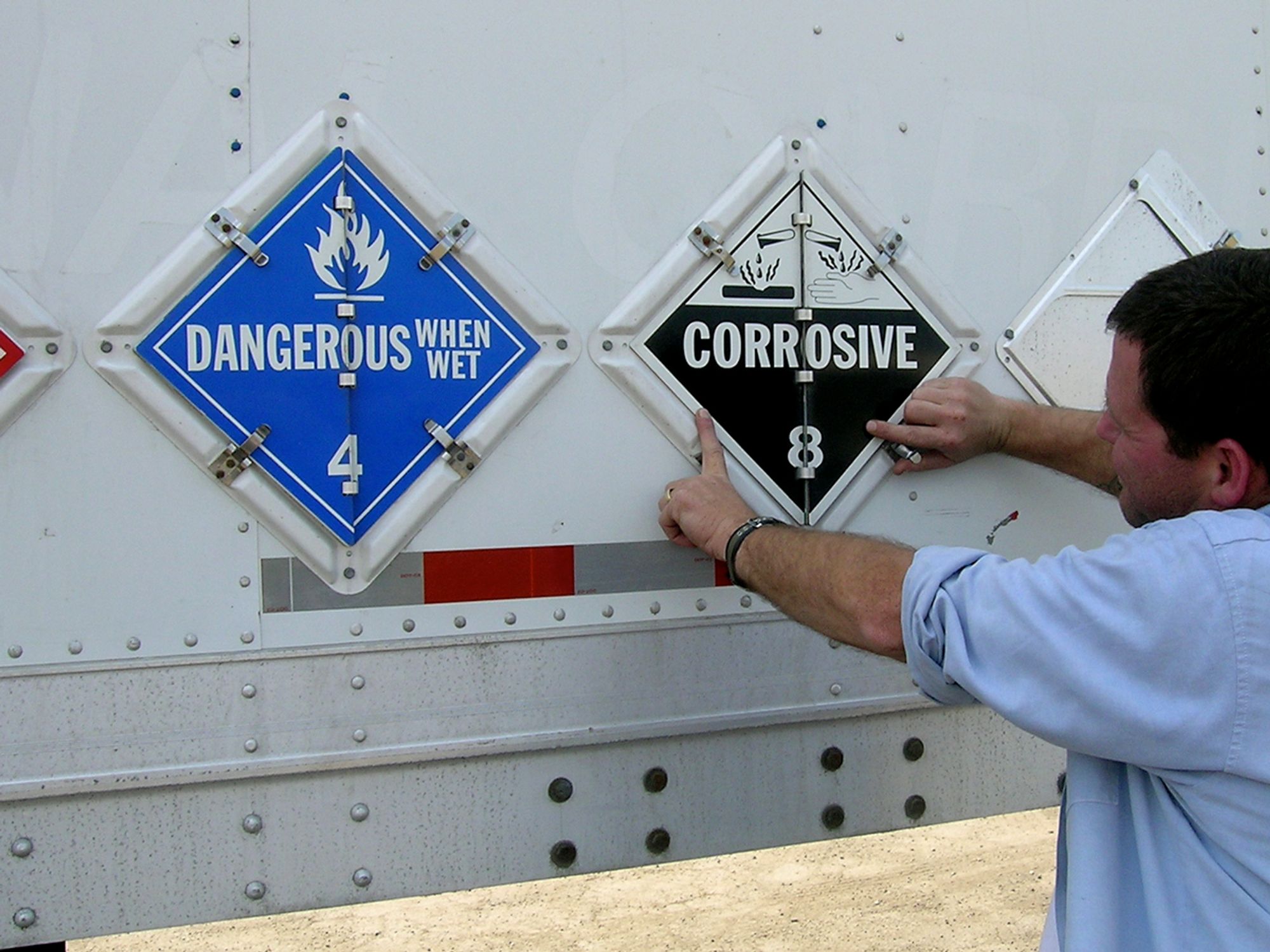Placards

- Entities involved in shipping hazardous materials must comply with placarding requirements outlined by the HMR.
Hazardous materials placards correspond closely with the shape, color, and design of hazardous materials labels. However, placards are much larger than labels. Placards alert people to potential dangers associated with the particular hazardous material contained in a motor vehicle, railcar, freight container, cargo tank, or portable tank.
Anyone offering or accepting hazardous materials for shipment in an amount that requires placards must ensure the material is placarded according to applicable sections of the Hazardous Materials Regulations (HMR).
Placarding requirements apply to each person who offers for transport or transports hazardous materials. The placarding requirements do not apply to the following materials:
- Infectious substances (Division 6.2);
- Materials authorized to be transported as a limited quantity (when properly identified on shipping papers or marked in accordance with 172.315);
- Materials packaged as “small quantities” (under provisions of 173.4, 173.4a, or 173.4b);
- Materials prepared in accordance with 173.13 (exceptions for Classes 3, 8, 9, and Division 4.1, 4.2, 4.3, 5.1, 6.1); and
- Combustible liquids in non-bulk packagings.
Placards are used to identify the hazard or hazards of materials contained in bulk packagings, freight containers, unit load devices, transport vehicles, or rail cars.
Responsibility
Responsibility for affixing or supplying placards varies according to mode of transport and type of packaging used to transport the hazardous material.
For highway transport, the shipper is responsible for providing the appropriate placards to the driver. The driver is responsible for applying them correctly on the vehicle and maintaining them during transport. In addition, drivers are responsible for any placarding necessitated by aggregate shipments.
Bulk packagings (172.514)
The person who offers a bulk packaging containing a hazardous material for transportation is required to affix the required placards before or at the time the packaging is offered for transportation.
Freight containers and aircraft unit load devices (172.512)
Each person who offers for transportation and each person who loads and transports a hazardous material in a freight container or aircraft unit load device is required to affix the appropriate placards.
Transport vehicles (172.506, 177.823)
When a hazardous material is offered for transport by highway, the individual offering the material must provide the carrier with the required placards — before or at the same time the material is offered for transport — unless the appropriate placards are already affixed to the vehicle.
Typically, the carrier is forbidden from moving the vehicle until placards have been affixed. However, the carrier may move the vehicle before placarding in an emergency situation or when one of the following three conditions are met:
- The vehicle is escorted by a representative of state or local government,
- The carrier has received permission from the U.S. Department of Transportation (DOT) to move the vehicle, or
- Movement of the vehicle is necessary to protect life and property.
Rail cars (172.508)
When a hazardous material is offered for transport by rail, the individual offering the material must affix the required placard(s) to the railcar — unless the car is already properly placarded. The rail carrier may not accept a railcar for transport unless required placards are affixed.
